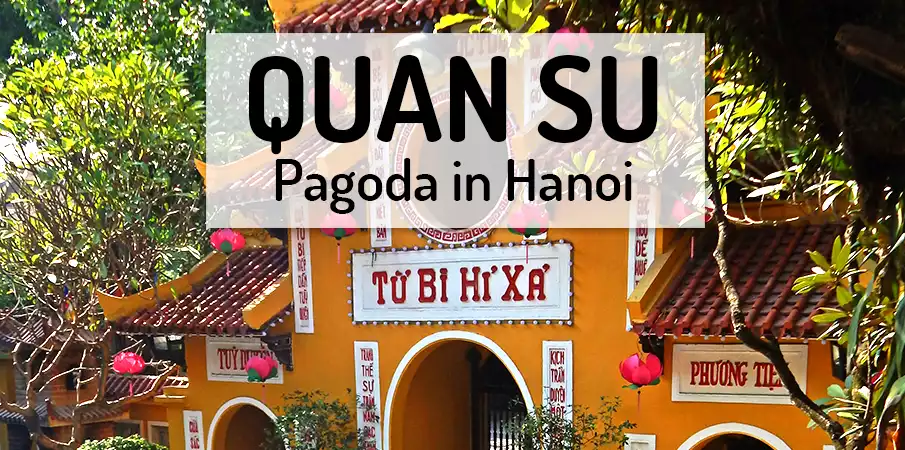
Quick answer: Quan Sứ Pagoda, also known as the Ambassadors’ Pagoda, is a historic Buddhist temple in the heart of Hanoi. It dates back to the 15th century and originally served to welcome foreign envoys. Today, it’s the headquarters of the Vietnam Buddhist Sangha and a peaceful spiritual retreat amid urban chaos.
At a glance:
- 📍 Location: 73 Quan Su Street, Hoàn Kiếm District, Hanoi.
- 🕰️ History: Built in the 15th century under the Lê dynasty to host ambassadors from Buddhist regions.
- 🏛️ Role: Since 1958, it has served as the central office of the Vietnam Buddhist Association.
- 🧱 Architecture: Features a triple‑gate entrance, a bell tower, lecture halls, and a large courtyard.
- 📚 Education: Houses a Buddhist library, classrooms, and a place for monastic life.
- 🕯️ Visiting: Open daily from about 7:30 AM to 11:30 AM and 1:30 PM to 5:30 PM.
Last updated in November 2025
Quan Su Pagoda – very important buddhist site in Hanoi.
-
- Quan Su Pagoda, also known as the Truc Lam Quan Su Temple, is a renowned Buddhist temple situated in the heart of Hanoi, Vietnam. This pagoda is known for its tranquil atmosphere, stunning architecture, and rich history. It’s a must-visit attraction for anyone interested in exploring the cultural heritage of Vietnam.
History of Quan Su Pagoda in Hanoi:
-
- Quan Su Pagoda dates back to the 15th century when it was established as a place of worship for Buddhist monks. It has undergone several transformations over the centuries, including renovation work during the Ly and Tran Dynasties.
- During the 17th century, the pagoda was converted into a military warehouse and was used for storing weapons and ammunition. In the early 20th century, the temple was restored and turned into the headquarters of the Vietnamese Buddhist Association. Since then, it has been a significant religious and cultural site in Hanoi.
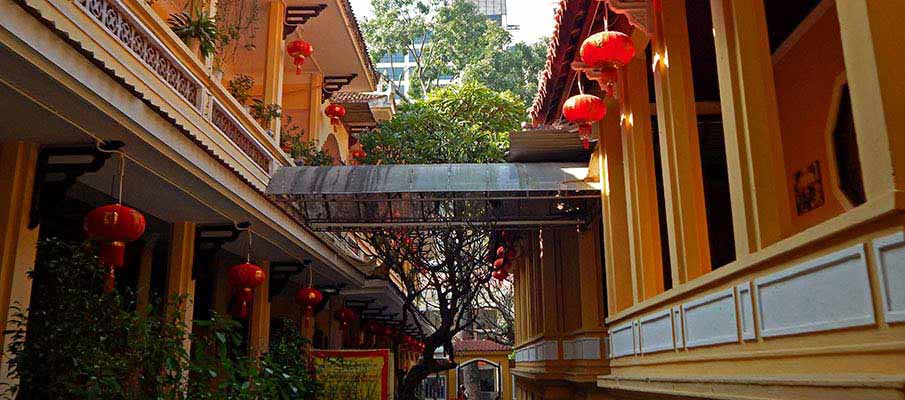
Architecture and Design of Quan Su Pagoda:
-
- The architecture of Quan Su Pagoda is a blend of traditional Vietnamese and Chinese styles. It features a multi-tiered pagoda, which is adorned with intricate carvings and elaborate ornaments. The temple’s facade is painted in vibrant hues of red and gold, which symbolize prosperity, good luck, and happiness.
- The interiors of the pagoda are equally impressive, with a central hall dedicated to the Buddha. The hall features a statue of the Buddha, which is surrounded by images of his disciples and other revered figures from Buddhist mythology. Visitors can also see ancient relics and artifacts, including intricate carvings and beautiful calligraphy.
BOOK a TOUR / TICKETS in Hanoi ➜
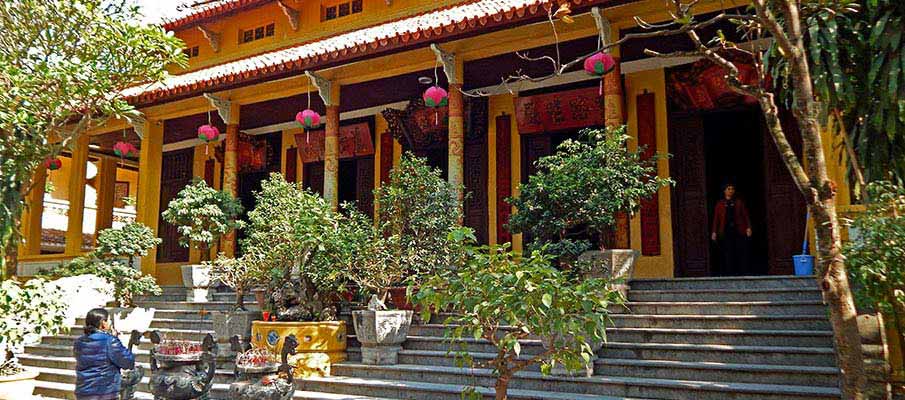
Visiting Quan Su Pagoda:
-
- Quan Su Pagoda is located in the center of Hanoi and is easily accessible by public transport. Visitors can take a taxi, bus, or motorbike to reach the temple. The pagoda is open to visitors every day, and there is no admission fee to enter. Visitors are required to dress modestly and remove their shoes before entering the temple. It’s also important to maintain silence and respect the temple’s peaceful atmosphere.
- The best time to visit Quan Su Pagoda is during the early morning or late afternoon when the temple is less crowded, and visitors can experience the serene ambiance of the temple. Visitors can also attend Buddhist ceremonies and rituals, which are held on special occasions throughout the year.
Conclusion:
-
- Quan Su Pagoda is an important cultural and religious site in Hanoi, Vietnam, and is a must-visit attraction for anyone interested in exploring the country’s cultural heritage. The temple’s stunning architecture, tranquil atmosphere, and rich history make it an ideal place to meditate and reflect on life’s deeper questions. Visitors can enjoy the temple’s serene ambiance, attend Buddhist ceremonies, and explore the ancient relics and artifacts on display.

Here are other interesting facts about Quan Su Pagoda:
-
- Quan Su Pagoda is one of the most important Buddhist temples in Vietnam and is the headquarters of the Vietnam Buddhist Sangha, the country’s largest Buddhist organization.
-
- The temple’s name, „Quan Su,“ translates to „Military Mandarin,“ reflecting its history as a military warehouse during the 17th century.
-
- In 2010, the pagoda underwent extensive renovation work, which included restoring the temple’s ornate roof and repairing the intricate wood carvings on the temple’s facade.
-
- The pagoda is home to a large collection of Buddhist scriptures, which are kept in a special room on the temple’s premises. These scriptures are an essential part of Vietnam’s Buddhist heritage and are used in Buddhist ceremonies and rituals.
-
- Quan Su Pagoda is famous for its annual lantern festival, which takes place on the 15th day of the Lunar New Year. During this festival, the temple is decorated with hundreds of colorful lanterns, and visitors can participate in traditional Vietnamese games and activities.
-
- The temple’s central hall houses a statue of the Buddha, which is made of bronze and is believed to date back to the 17th century.
-
- In addition to being a place of worship, Quan Su Pagoda also serves as a community center, offering various social services to the local community, including education and healthcare programs.
-
- Quan Su Pagoda is only about 300m from Hoa Lo Prison Museum, another interesting museum in Hanoi center.
Opening time of Quan Su Pagoda:
All the week – 7:30 – 11:30, 13:30 – 17:30
Official website: www.chuaquansu.net
Photos of Quan Su Pagoda in Hanoi:
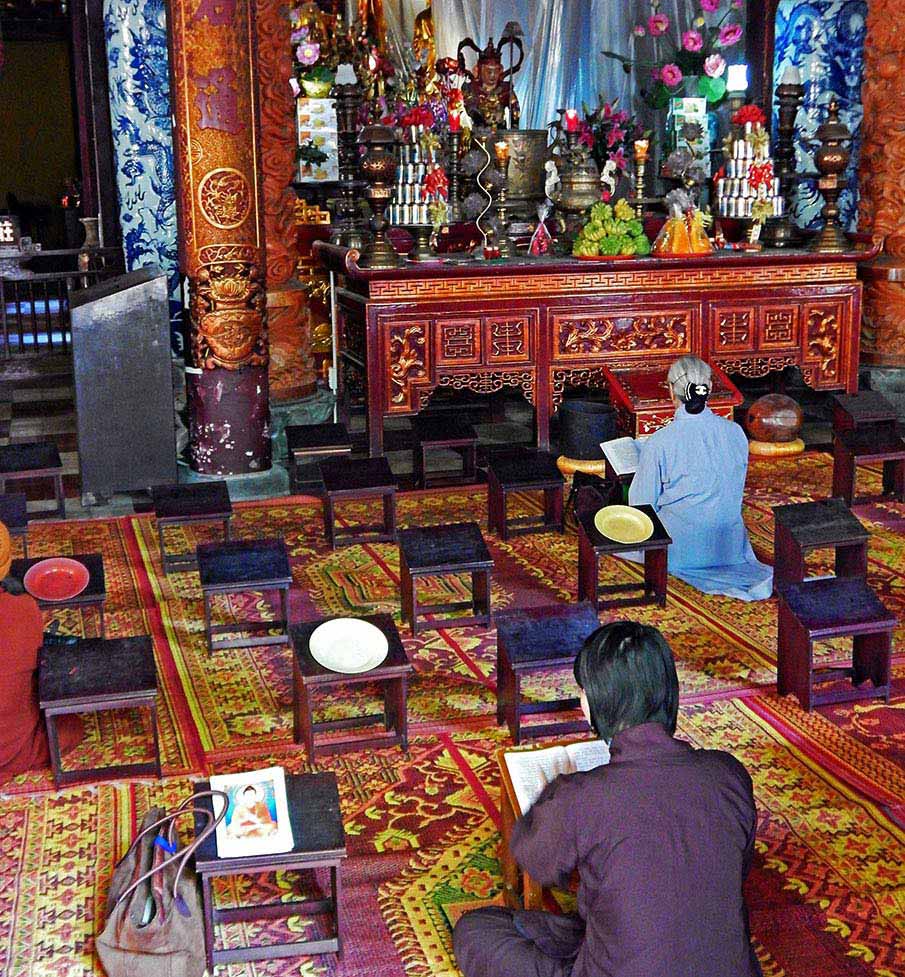
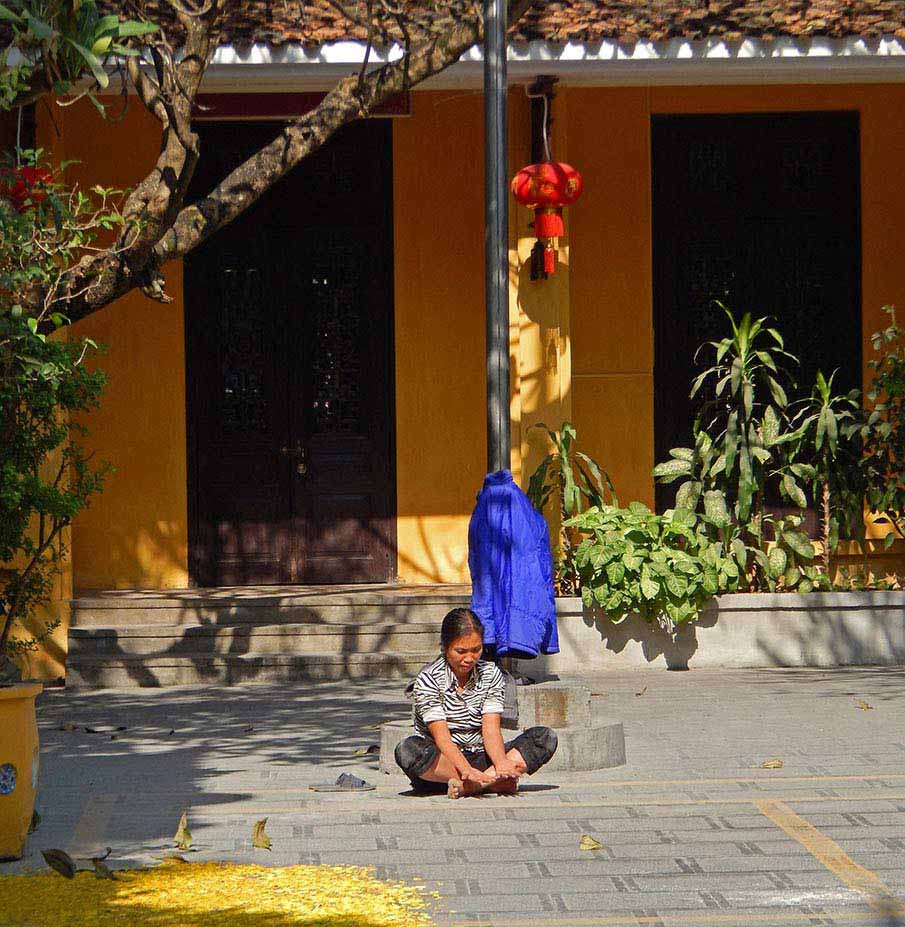
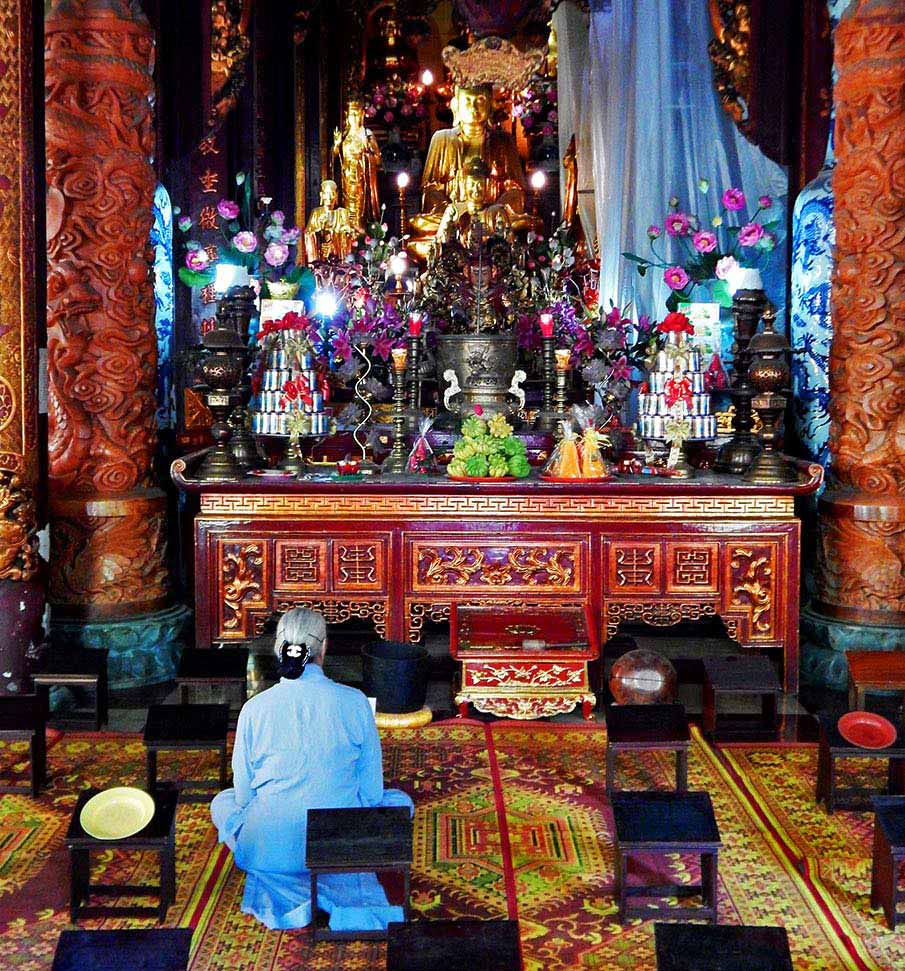
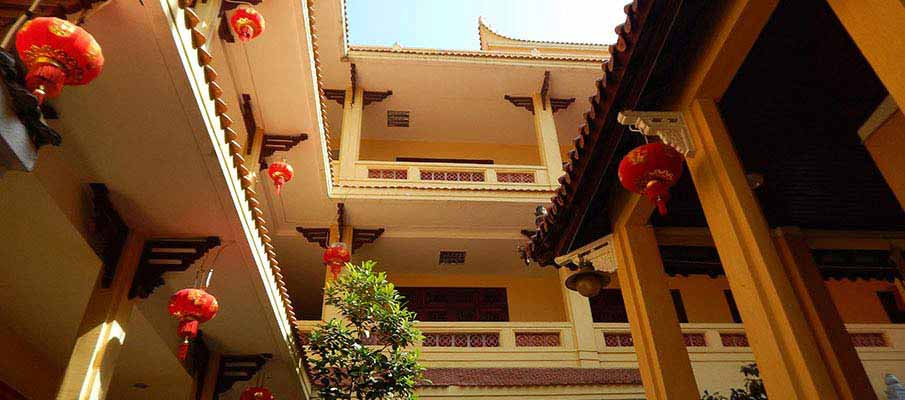
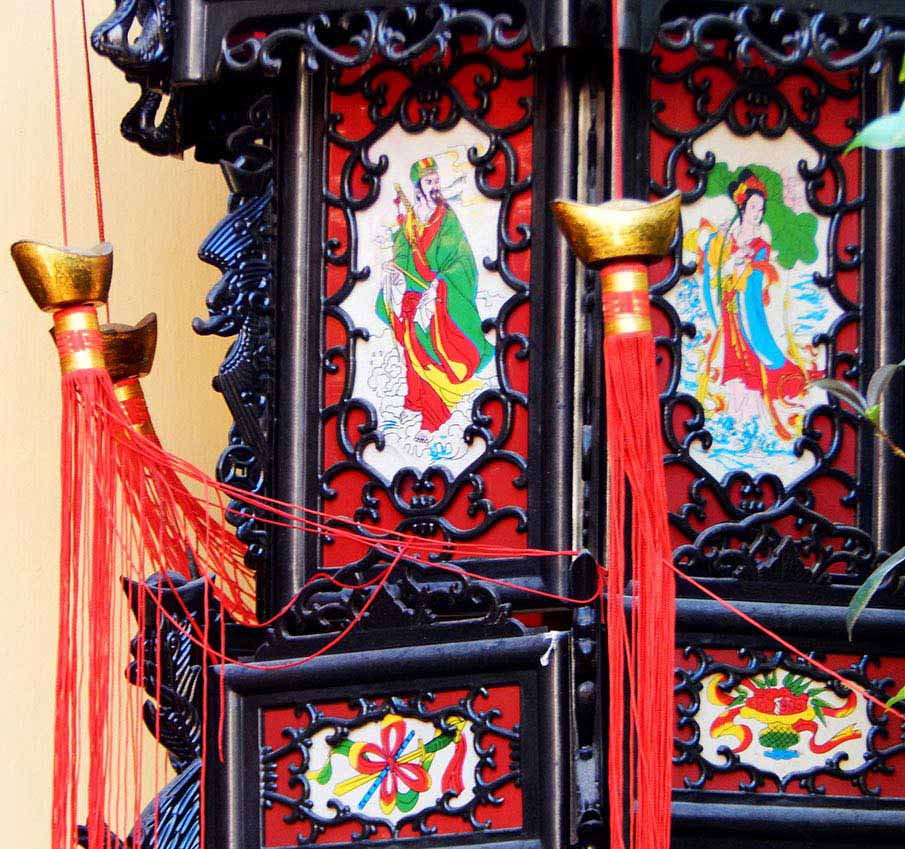
❓ FAQ + Useful Tips – Quan Su Pagoda in Hanoi:
1. What is Quan Su Pagoda, and what is its significance?
-
- Quan Su Pagoda is a Buddhist temple located in the heart of Hanoi, Vietnam. It is significant as it is the headquarters of the Vietnam Buddhist Sangha, the largest Buddhist organization in the country. The temple is also famous for its stunning architecture, tranquil atmosphere, and rich history.
2. How do I get to Quan Su Pagoda, and is there an admission fee?
-
- Quan Su Pagoda is located in the center of Hanoi and is easily accessible by public transport. Visitors can take a taxi, bus, or motorbike to reach the temple. There is no admission fee to enter the pagoda.
3. When is the best time to visit Quan Su Pagoda?
-
- The best time to visit Quan Su Pagoda in Hanoi is during the early morning or late afternoon when the temple is less crowded, and visitors can experience the serene ambiance of the temple. Visitors can also attend Buddhist ceremonies and rituals, which are held on special occasions throughout the year.
4. What should I wear when visiting Quan Su Pagoda?
-
- Visitors are required to dress modestly when visiting Quan Su Pagoda. This means wearing clothing that covers the shoulders and knees. It’s also important to remove your shoes before entering the temple.
5. What are the main attractions at Quan Su Pagoda?
-
- The main attractions at Quan Su Pagoda are the stunning architecture, including the multi-tiered pagoda adorned with intricate carvings and elaborate ornaments. Visitors can also see ancient relics and artifacts, including beautiful calligraphy and a statue of the Buddha.
6. What is the history behind Quan Su Pagoda?
-
- Quan Su Pagoda dates back to the 15th century when it was established as a place of worship for Buddhist monks. It has undergone several transformations over the centuries, including renovation work during the Ly and Tran Dynasties. During the 17th century, the pagoda was converted into a military warehouse and was used for storing weapons and ammunition.
7. What is the significance of the lantern festival at Quan Su Pagoda?
-
- The lantern festival at Quan Su Pagoda is an annual event that takes place on the 15th day of the Lunar New Year. During this festival, the temple is decorated with hundreds of colorful lanterns, and visitors can participate in traditional Vietnamese games and activities.
8. Can I attend a Buddhist ceremony or ritual at Quan Su Pagoda?
-
- Yes, visitors can attend Buddhist ceremonies and rituals at Quan Su Pagoda. These events are held on special occasions throughout the year, and visitors are welcome to participate in them.
9. What services does Quan Su Pagoda offer to the local community?
-
- In addition to being a place of worship, Quan Su Pagoda also serves as a community center, offering various social services to the local community, including education and healthcare programs.
10. Are there any rules or regulations that visitors should be aware of when visiting Quan Su Pagoda?
-
- Yes, visitors should be aware of a few rules and regulations when visiting Quan Su Pagoda. These include dressing modestly, removing your shoes before entering the temple, and maintaining silence and respect for the temple’s peaceful atmosphere. Visitors should also be mindful of taking photographs and not disturb the ongoing religious activities at the temple.
11. Can visitors participate in meditation sessions at Quan Su Pagoda?
-
- Yes, visitors can participate in meditation sessions at Quan Su Pagoda. The temple offers meditation classes for both beginners and advanced practitioners. These sessions are led by experienced monks and are a great way to experience the peaceful ambiance of the temple.
12. Is Quan Su Pagoda accessible for people with disabilities?
-
- Quan Su Pagoda is accessible for people with disabilities, although the temple’s architecture and layout may present some challenges. Visitors with disabilities can access the main hall and courtyard, but some areas of the temple may not be easily accessible due to stairs and uneven surfaces.
13. Are there any nearby attractions to visit when visiting Quan Su Pagoda?
-
- Yes, there are several nearby attractions to visit when visiting Quan Su Pagoda. These include the Hoa Lo Prison Museum, Temple of Literature, Hoan Kiem Lake, and the Old Quarter of Hanoi. Visitors can also take a short walk to explore the nearby street markets and sample traditional Vietnamese street food.
BOOK a TOUR / ACTIVITY in Hanoi ➜
| Interesting Facts about Quan Su Pagoda: | Description |
|---|---|
| 1. Historical and Religious Significance: |
Quan Su Pagoda, also known as the Ambassadors‘ Pagoda, is a place of great historical and religious significance in Hanoi. The pagoda has a history dating back several centuries and is closely associated with the development of Buddhism in Vietnam. It has served as a place of worship, meditation, and cultural exchange for many generations. |
| 2. Tranquil Urban Oasis: |
Despite its location in the bustling heart of Hanoi, Quan Su Pagoda offers a serene and peaceful escape from the city’s vibrant streets. The pagoda’s courtyard and garden provide an oasis of tranquility, inviting visitors to relax, meditate, and experience a sense of calm in the midst of urban chaos. |
| 3. Unique Architecture: |
Quan Su Pagoda is known for its distinctive architectural style. The pagoda’s design reflects a harmonious blend of Vietnamese and traditional Chinese architecture. Intricate wooden carvings, decorative motifs, and a graceful layout create an aesthetic that is both visually captivating and spiritually inspiring. |
| 4. Cultural Hub: |
The pagoda is not only a religious site but also a cultural hub. It frequently hosts events and activities related to Buddhism, art, and culture. Visitors have the opportunity to participate in ceremonies, meditation sessions, and art exhibitions, gaining a deeper understanding of Vietnamese culture and spirituality. |
| 5. Connection to Buddhism: |
Quan Su Pagoda is closely connected to Buddhism, making it a revered destination for Buddhists in Hanoi. It serves as the headquarters of the Vietnam Buddhist Sangha’s Central Committee, and its peaceful ambiance offers an ideal setting for practitioners to engage in religious rituals and meditation. |
| 6. Treasured Artifacts: |
The pagoda houses a collection of treasured artifacts, including ancient statues, scriptures, and religious relics. These artifacts not only hold historical and cultural value but also provide insight into the development of Buddhism in Vietnam and the pagoda’s role in preserving these treasures. |
| 7. Spiritual Practices: |
Quan Su Pagoda is a place for spiritual practices and contemplation. Visitors often witness monks and practitioners engaged in meditation and rituals, creating an atmosphere that fosters self-reflection and a sense of inner peace. It offers a unique opportunity to observe and learn about Buddhist customs. |
| 8. Community Engagement: |
The pagoda actively engages with the local community, offering support to those in need. It runs social programs, including charity work, education, and healthcare services, as an expression of Buddhist compassion and a commitment to improving the well-being of the community and society at large. |
| 9. Preserving Tradition: |
Quan Su Pagoda plays a vital role in preserving traditional Buddhist practices and customs. It acts as a center for religious education, where monks and scholars pass down ancient teachings to younger generations, ensuring that the rich traditions of Buddhism remain alive and relevant. |
| 10. A Spiritual Retreat: |
For both locals and tourists, Quan Su Pagoda offers a unique opportunity to retreat from the noise and stress of daily life, finding solace and inspiration within its sacred walls. Whether seeking spiritual enlightenment or simply a moment of serenity, the pagoda welcomes all with open arms and a sense of timeless grace. |

